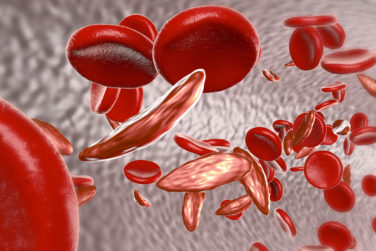David S. Duplay has been in the healthcare and interactive marketing industry for more than 20 years. Over the last 10, he has become more focused on advancing healthcare and healthcare marketing using existing and emerging technologies. That shows in his latest endeavors. Not only is he the Founder and President of MedTera, a healthcare direct marketing company specializing in dimensional to digital (aka connecting direct mail with digital initiatives), but he is also a chairman at Healtheo360, a social media company that provides communities for patients with chronic conditions and their caregivers. David took the time to discuss with us the impact digital is having on healthcare marketing.
PM360: Can you talk about how digital is evolving and its effect on healthcare marketing?
David S. Duplay: Digital is an interesting aspect. It allows you to measure in a more real-time ROI against your marketing campaigns, but we can’t discount direct mail. It seems like what’s old is new again. I think back 15, 20 years ago when we were doing direct mail at Clark O’Neill and here we are again.
There was a recent study conducted by The Epsilon Group that showed that a lot of people in the U.S. and Canada have reservations about the use of email and other Internet mediums to convey pertinent medical information. You look at these studies and you try to determine how to bring digital and dimensional, on- and off-line, together. That’s really what we’re focused on at MedTera.
I would even take it one step further. We call it D2D2D, dimensional to digital to dialogue. We use dimensional marketing pieces to engage the target, drive them to an online community where we can market to them for a long period of time, and measure ROI in real time. But our end goal is to close the loop and really engage those targets in dialogue.
So if we can be successful at getting something in their hands that’s sensory stimulating and conveys a message that’s appropriate for that target, we can then lead them online using web keys, QR codes, URLs and personalized URLs. But that online destination has to be appropriate for the kind of medicine that the physician practices or the kind of information that that patient or caregiver is seeking.
What kind of online destinations do you set up for healthcare professionals?
We’ve developed a tool called the MedTera Medical Resource Center, and it’s a digital destination with a content management system underlying that allows us to serve content that’s appropriate for the type of physician that comes to the platform. But it also refreshes that info on an activity based level.
For example, when they visit the platform initially, they’ll find an educational video from a KOL. If they watch the video, when they come back, that video is replaced by the next one in the sequence.
We’re always refreshing the content. We’re delivering that content on a platform that allows the physician to find education for themselves, to print patient education, and do other things of value such as request a sample from a manufacturer or request a rep visit. It’s almost one-stop shopping.
You also mentioned closing the loop. How do you get patients or physicians to interact with you so you can get more information?
If we’re using QR codes or if we’re using web keys, we can tell which physicians came to the platform through which channel and what tactic that we used. Through the backend analytics of this tool we can then look at and understand how much time the physicians are spending there and what they’re actually doing within the platform.
If we see them re-engage with the platform, that’s really the dialogue that we’re looking for. It’s not dialogue in terms of we’re expecting to get physicians on the phone and ask them how they felt about our information. It’s more, we’re serving info to them where they want it, how they want it, when they want it and we’re watching how they’re reacting to it and learning from it; then we reserve the information that they seem to gravitate towards in future campaigns.
You mentioned web keys and QR codes. Near field communication (NFC) adoption in smartphones has also become popular. Do you think NFC will become a useful tool for pharma?
I can see companies building compliance and adherence tools using NFC. For instance, if I can walk by my pharmacy and I can get a message on my smartphone that either my prescription is ready or my monthly refill is due; the chances of me diverting and going into that pharmacy are probably a lot greater than me sitting at my desk in my office and getting an email or some other interaction that says, “Hey, it’s time to refill your script.” It’s all about convenience.
What concerns me a little bit, however, is that the FDA is now talking about coming out with guidance on social media sometime in mid-2014. That’s going to be yesterday’s news. Technology is changing so fast that we’re going to see things in mid-2014 that we aren’t even thinking about today. And NFC, Bluetooth, social, mobile and cloud computing are all going to really drive a lot of that.
How are you handling the current lack of FDA guidelines at Healtheo360?
At Healtheo360, we get patients with chronic conditions that upload their stories by video to our community—stories about how they’re dealing with their condition, how they felt when they were newly diagnosed, and what kind of treatment and therapy they’re going through. They’re sending videos when they have a good day. They’re sending videos when they have a bad day. The act of sharing their story is very therapeutic. At Healtheo360, we refer to this as Virtual Social Therapy. We don’t screen those videos before they go live. You literally can video yourself with your smartphone, upload it, and in a matter of two or three minutes, it’s live in that community.
We have some very strict terms and conditions and guidelines for people who submit stories, but we have not had to pull any stories down. When people go there and they see the kind of content that others are putting out there, the challenges that they’re having and the help that they’re seeking, I think the community will self-police itself. If not, it’s easy enough to pull that content out of the community.
Do you see any other ways that pharma should be using social media that they’re not?
There are great channels out there. Facebook is a great tool. Twitter is a great tool. Pinterest is a great tool. Even things like LinkedIn and the communities that are forming on LinkedIn. You can’t think of social media as just one channel and one play. You have to look at these platforms, identify the kind of product you’re looking to market and the benefits of each channel. Then build a strategy that uses the best components of each one—and how they interconnect and tie to each other. That’s really the strategy in social media. It’s not a single, I’m going to put up a Facebook page up or I’m going to be on Twitter or I’m going to be on Pinterest. It’s all of those.








